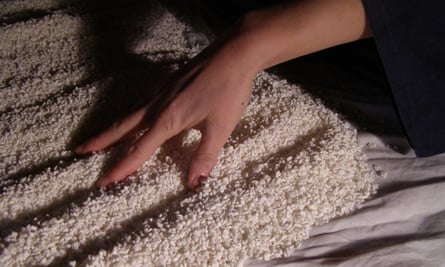When sommelier Erika Haigh opened the UK’s first independent sake bar, in London’s West End in 2019, passersby would wander in and try to order milkshakes, bewildered by the unfamiliar drink advertised in the window.
“Today, that confusion has largely disappeared,” said Haigh, who has since opened Mai Sake, a shop offering tasting events and meals. “You can now go on a sake bar crawl across London, and you’ll find it featured on the beverage lists of many restaurants – including non-Japanese establishments.”
The Japanese fermented rice drink, typically about 15% ABV, is becoming increasingly important on the international drinks market. Exports have grown virtually every year for the past 13 years and the export market in 2023 was 1.8 times larger than in 2019, with sales totalling ¥41.1bn (£211m).
China and the US are the biggest consumers of sake, but the UK market is growing. Sake is no longer drunk just for courage at karaoke clubs, but sold in specialist shops and sophisticated bars. Waitrose reported searches for sake on its website have increased 241% year on year, while searches for plum sake were also up 100% on 2023. Even Wagamama – one of the first restaurants to offer the drink nationwide – has just added a sparkling sake to its list.
Berry Bros & Rudd, the UK’s oldest wine merchant, has started selling sake “en primeur”, a method favoured by collectors – a chance to buy wine before it is bottled and typically for a good price. The practice was started in Bordeaux and is associated with French and Italian vintages, so to see sake offered for sale this way indicates a big change in perception in the UK.
“We’ve seen increasing interest in our sake offering, and wanted to add something exciting for our customers,” said Rob Whitehead, spirits buyer at Berry Bros & Rudd. “This is a unique product that speaks to experienced wine collectors – those who understand that patience is key when collecting – and to newcomers.” The company has sold twice as much sake by value in the past year than in the previous three financial years. Whitehead said that, while their loyal customers are becoming more adventurous and investing in sake, they are also seeing entirely new buyers.

Haigh grew up in Japan – she is Canadian and Japanese – but only really started to appreciate her home country once she’d left. She trained as a sommelier and started to make connections with traditional breweries in Japan. Haigh said the rise of sake is in large part due to the hard work of insiders in the industry over the past decade, but that there has also been a surge of interest in Japanese culture and cuisine in the UK.
This shows at every price point: Tesco sold 21m packs of sushi in its meal deal in 2023, while upmarket omakase restaurants have also gained popularity, especially in London. Omakase means “I’ll leave it to you” and these restaurants specialise in unique set menus devised by the chef. Overall the UK Japanese cuisine market has risen from £797m in 2017 to £1.2bn in 2023.
With concurrent trends for artisan food production and natural ingredients, sake ticks a lot of boxes. “Premium sake contains no preservatives, tannins or sulphites, which appeals to this newfound consumer consciousness,” said Haigh. “Additionally, the industry supports small craft producers and preserves a tradition of sake-making that spans over 2,000 years.”
Japan’s application for traditional sake brewing to be added to Unesco’s list of intangible cultural heritage is being considered this year.
after newsletter promotion
The UK also seems to be showing growing interest in other Asian spirits and drinks. Shochu is a spirit that is now regularly featured as a cocktail ingredient at British bars, made from grains such as rice and barley as well as sweet potato and molasses. Baijiu, a potent traditional Chinese drink made from fermented sorghum is actually the world’s bestselling spirit and has finally been discovered by British drinkers.
Whitehead says the growing popularity of sake is part because it’s “one of the most food-friendly drinks out there”. At the events Haigh organises, they have paired sake with everything from pizza to Michelin-starred mains. She recommends that the sake-curious dabble with the drink by trying it with a meal.
“Pair sake with familiar foods so the experience is less daunting. Swap the white wine at your alfresco lunch for a fresh and fruity sake served chilled in a white-wine glass, or replace a pint of Guinness at your steak dinner with a savoury and robust sake served closer to room temperature.”
Source: theguardian.com


















